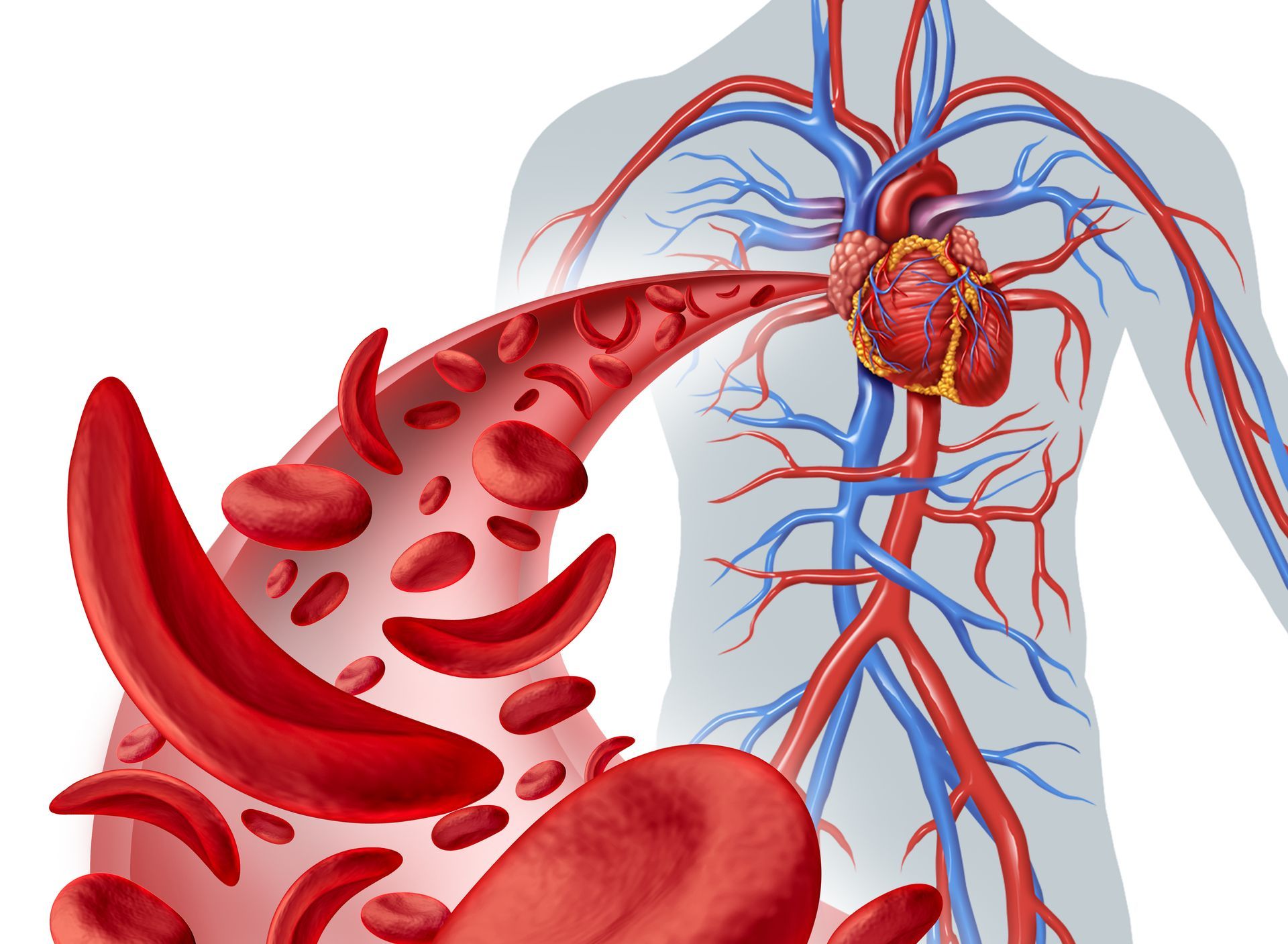Sickle Cell Anemia

Sickle cell anemia is an inherited condition in which red blood cells become hard, sticky and crescent-shaped -- hence, the name. These cells can get caught in small blood vessels, preventing blood flow. They also die much faster than healthy red blood cells do. Losing even these impaired carriers further reduces the flow of oxygen and nutrients through the blood.
Untreated, sickle cell anemia can lead to stroke, acute chest syndrome (which impacts the ability to breathe), high blood pressure in the lungs, organ damage, blindness, open sores or ulcers on the legs, gallstones and impotence.
In the United States, sickle cell anemia is most frequently found in African-Americans. This is due to inherited genes influenced by geography, creating traits that remain hereditary.
SEEK HELP FOR THESE SYMPTOMS:
* Anemia and fatigue
* Pain in the abdomen, chest or joints
* Swollen hands and feet
* Frequent infections or fever
* Slowed growth and delays in the onset of puberty
* Vision problems
* Yellow tint to the skin or eyes
* Signs of stroke, including weakness on one side or in the face, arms or legs
TREATMENT:
Bone marrow transplants are the only possible cure. To alleviate symptoms, treatments include antibiotics and pain relievers.
The antimetabolite medication hydroxyurea reduces the frequency of painful episodes and may help stave off the need for blood transfusions and hospitalization. But because hydroxyurea increases the risk of infection, its use is being evaluated.
Blood transfusions are occasionally employed for acute chest syndrome to boost the count of unaffected red blood cells. Ventilators are also used for this condition.
* The disease gets its name from the C-shaped red blood cells it creates, which resemble a sickle.
